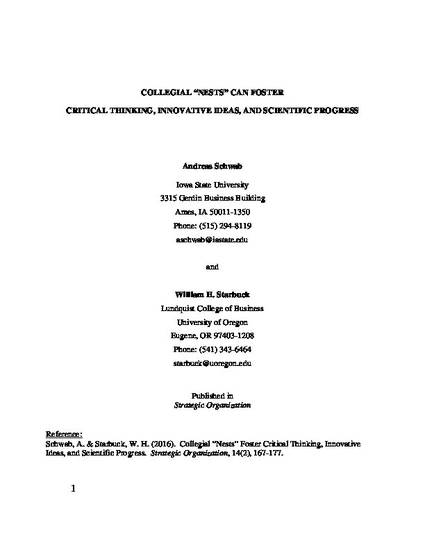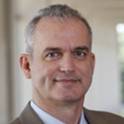
Article
Collegial "nests" can Foster Critical Thinking, Innovative Ideas, and Scientific Progress.
Strategic Organization
Document Type
Article
Disciplines
Publication Version
Accepted Manuscript
Publication Date
5-1-2016
DOI
10.1177/1476127016643715
Abstract
How can management and strategy scholars organize to generate more productive, more innovative, and more impactful research? With appropriate cultures and leaders, small and egalitarian discussion groups that we call “collegial nests” can become powerful generators of innovative ideas and creators of extraordinary scholars. Collegial nests need cultures that free participants to think critically, to cherish new viewpoints, and to speak freely without fear of ridicule. They also need leaders who model such cultures and facilitate frequent discussions. Two case examples illustrate how productive collegial nests can create better science and better scientists. To generate scientific innovation and progress on a large scale, many autonomous groups tackling related issues are desirable. Modern communication technology is making it feasible for groups to operate over large distances and to coordinate with each other at very low cost. Collegial nests offer greater potential for enhancing scholarly productivity and innovation than do attempts to regulate scholarship via hierarchical structures. Multiplicity can lower the probability of wasting resources on low-yield paths, egalitarian control can reduce the influence of vested interests, and a combination of shared goals and partial autonomy can integrate enthusiasm with sensible risk taking.
Copyright Owner
SAGE Publications
Copyright Date
2016
Language
en
File Format
application/pdf
Citation Information
Andreas Schwab and William H. Starbuck. "Collegial "nests" can Foster Critical Thinking, Innovative Ideas, and Scientific Progress." Strategic Organization Vol. 14 Iss. 2 (2016) p. 167 - 177 Available at: http://works.bepress.com/andreas_schwab/15/

This article is from Strategic Organization, May 2016, 14(2); 167-177. DOI: 10.1177/1476127016643715. Posted with permission.